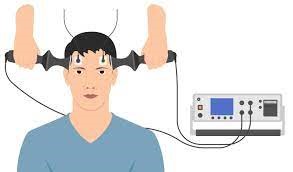A nurse in an emergency department is caring for a child who has a fever and fluid-filled vesicles on the trunk and extremities. Which of the following interventions should the nurse identify as the priority?
Encourage oral fluids.
Administer acetaminophen as an antipyretic.
Apply topical calamine lotion.
Initiate transmission-based precautions.
The Correct Answer is D
A. Encouraging oral fluids is an important intervention for a child who has a fever, as it helps prevent dehydration and electrolyte imbalance. However, it is not the priority intervention, as it does not address the risk of infection transmission to other clients or staff.
C. Applying topical calamine lotion may help soothe the itching and discomfort caused by the vesicles, but it is not the priority intervention, as it does not prevent infection transmission or treat the underlying cause of the fever.
B. Administering acetaminophen as an antipyretic may help reduce the fever and provide symptomatic relief for the child, but it is not the priority intervention, as it does not prevent infection transmission or treat the underlying cause of the fever.
D. Initiating transmission-based precautions is the priority intervention, as it protects other clients and staff from exposure to the infectious agent that causes the vesicles and fever. The nurse should wear gloves, gown, mask, and eye protection when caring for the child, and place them in a private room or cohort them with other clients who have similar symptoms.
Nursing Test Bank
Naxlex Comprehensive Predictor Exams
Related Questions
Correct Answer is D
Explanation
Choice A reason:
Increased urinary frequency Increased urinary frequency is not a typical adverse effect of sertraline. However, some individuals may experience changes in urinary habits due to various factors, but it is not directly related to sertraline use.
Choice B reason
Dry cough Dry cough is not a commonly reported adverse effect of sertraline. Cough is not a typical symptom associated with this medication.
Choice C reason
Metallic taste in the mouth While some individuals may experience changes in taste as a side effect of sertraline, a metallic taste in the mouth is not one of the commonly reported adverse effects. Taste changes are usually mild and temporary.
Choice D reason
Sertraline is a selective serotonin reuptake inhibitor (SSRI) antidepressant commonly used to treat conditions like depression, anxiety disorders, and obsessive-compulsive disorder. While most individuals tolerate sertraline well, it can cause certain adverse effects, and excessive sweating (also known as diaphoresis) is one of them.
Excessive sweating is a common side effect of sertraline and other SSRIs. It can manifest as increased sweating during the day or night, even in cooler environments. The degree of sweating can vary among individuals, and some may experience it more than others.
Correct Answer is B
Explanation
A. "Perhaps you think the ECT is dangerous, but I've seen it have good results." This response is dismissive of the client's concerns and implies that the nurse knows better than the client.
B. "You have the right to change your mind about this procedure at any time." This response respects the client's autonomy and informs them of their rights.
C. "Everyone gets a little nervous about this procedure as the time for it approaches." This response minimizes the client's feelings and assumes that they are experiencing normal anxiety.
D. "Your doctor wouldn't have suggested ECT if they didn't think it would help you." This response shifts the responsibility to the doctor and does not address the client's fears.

Whether you are a student looking to ace your exams or a practicing nurse seeking to enhance your expertise , our nursing education contents will empower you with the confidence and competence to make a difference in the lives of patients and become a respected leader in the healthcare field.
Visit Naxlex, invest in your future and unlock endless possibilities with our unparalleled nursing education contents today
Report Wrong Answer on the Current Question
Do you disagree with the answer? If yes, what is your expected answer? Explain.
Kindly be descriptive with the issue you are facing.
